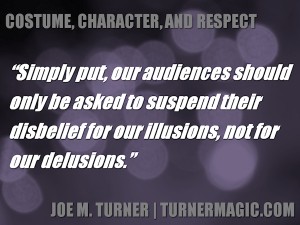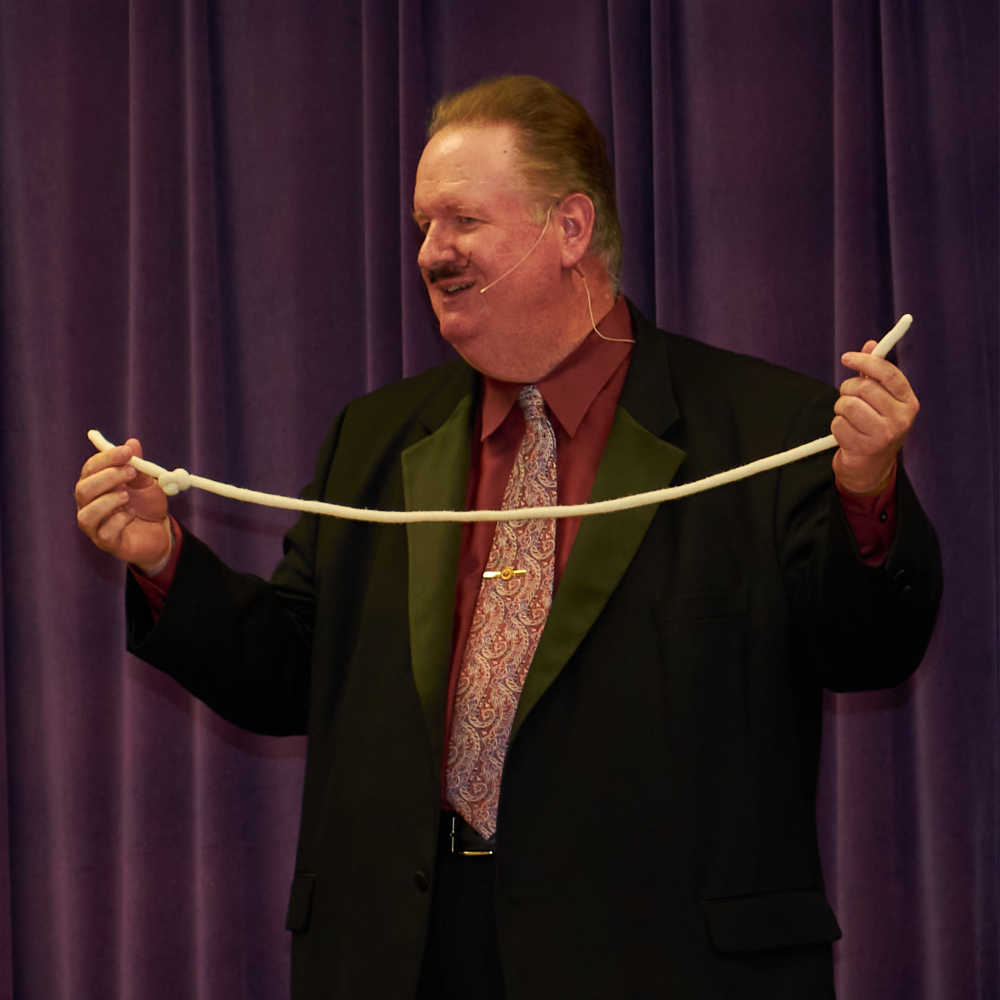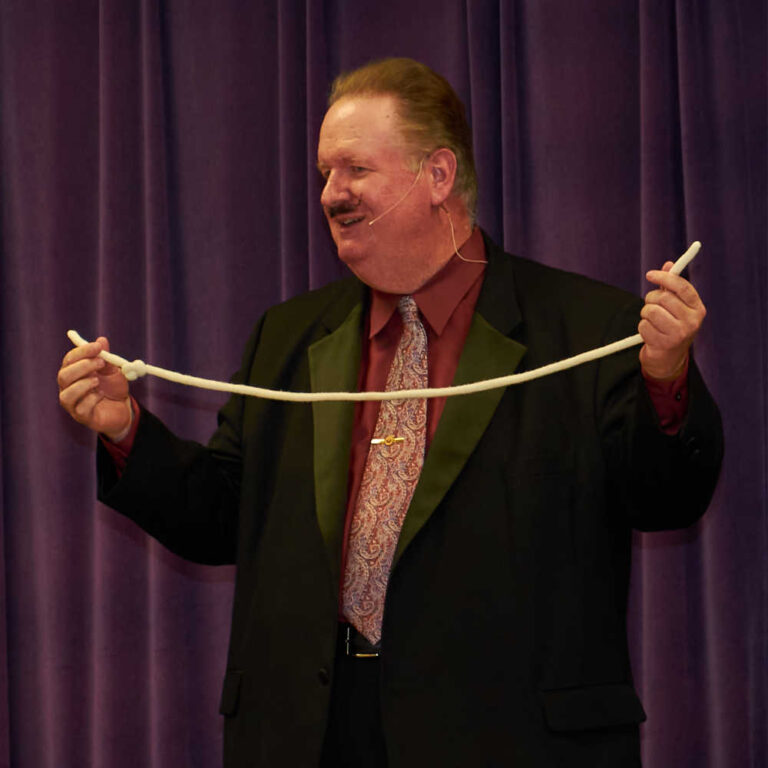Costume, Character, and Respect
Much has been written on subjects of professional attire, costuming, image, and character. Whether you’re a professional making a business presentation, a performer on a stage, or even a member of a crowd, your choice of attire speaks to the people who see you. Your costume speaks to your audience. What is it saying?
Let’s start by allowing the word “costume” to mean not just what we might wear at a masquerade party or in a play, but all the attire we choose to wear in all circumstances. If you are wearing clothing and other people see you, that is a costume and you’re on a stage. Your objectives will vary from stage to stage, from audience to audience, and from costume to costume. Your objectives on your “stage” while getting your tires rotated will be different from your objectives on your “stage” when pitching your business idea to a group of investors. But in both cases, what you’re wearing is your costume for that audience.
Costume and Character

Likewise, in our own personal and professional lives, our costume must help our audience understand who we are and what our intentions are.
There is a wide spectrum of choices, of course. People making presentations may wish to be seen as authoritative, safe, innovative, trustworthy, or eccentric. People may wish to appear more or less financially successful than they really are, based on their objective or their environment.
Performers on a stage may have different or competing objectives. Their director may wish to conceal something about their character for later revelation. A solo act, like a magician, may develop different costumes for different audiences and environments.
It’s important to remember, however, that all the choices count whether you intend them to count or not. Whether the choices were made consciously or unconsciously, wisely or unwisely, the audience can and will take your clothing into account as they process your performance, whether you’re pushing a grocery cart at the supermarket or speaking at a TED Talk.
Respect for Your Audience, Respect for Yourself
Because costumes speak to the audience, we must be careful to ensure that the messages they carry show respect for the audience.
Some time ago I attended a show where a performer took the stage with a thoughtful and artistic performance. She was skillful and creative. Her performance, however, was almost completely undermined by her choice of costume. Without going into graphic detail, she was too large and too top-heavy for the clothing she chose. She seemed to want to communicate that her character was mysterious, feminine, and powerful. Instead, she came across as insecure, unaware, and perhaps even a bit deluded.
Her failure to recognize that her clothing was not suitable for her performance wasn’t just an indicator of a lack of understanding of her own body, but also a demonstration of a lack of respect for her audience. An audience of people who wanted to love her were uncomfortably awaiting a wardrobe malfunction, wondering if the families with children present were going to make it through the show, and silently rooting not for the performer to be successful, but for the containment to hold everything until the act was concluded.

I have my friend Bob Sheets to thank for taking me aside and telling me, in love and in honesty, that I was diminishing my performance by wearing clothes that were too small for the body I had chosen to put on that stage. I had to respect myself and my audience enough to look at myself honestly, and make decisions about costume and character from that true starting point, not the starting point I used to have.
Perhaps we have all been guilty of looking in rose-colored mirrors, but if we want to have an amazing impact on our audiences, we must make choices about costume and character based on reality. Simply put, our audiences should only be asked to suspend their disbelief for our illusions, not for our delusions.
There comes a time – or better said, there should come several times – in every performer’s life when he or she takes an honest look at his or her body and assesses it realistically. What we choose to wear is a reflection of our character, our respect for ourselves, and our respect for our audience.






